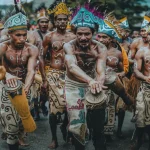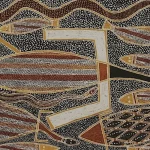
Traditional Storytelling in Contemporary Writing: The Continuity of Indigenous Narratives
In Australia, the Indigenous peoples have a rich and diverse tapestry of narratives passed down through generations. It is important to teach the upcoming generations about these historical beliefs, and narratives of indigenous people that continue to thrive and find new expression and continuity in contemporary writing. This essay explores how Indigenous Australian storytelling has evolved and adapted in modern literature, bridging the gap between the past and the present while preserving the essence of their cultural heritage.
The Significance of Indigenous Storytelling
When you think about storytelling with your kids, it is mostly about fun and entertainment. But for Indigenous Australians, storytelling is more than mere entertainment; it is the foundation of their cultural identity. Traditionally, elders would pass down knowledge and wisdom through oral narratives, preserving their history, beliefs, and sacred customs. These stories served as moral guides, teaching the younger generations about their responsibilities, social norms, and respect for the land. Through storytelling, Indigenous Australians established a profound connection with their ancestors and their spiritual beliefs, allowing them to maintain a sense of continuity with their past.
Tip
Here are some Indigenous Stories To Read And Share With Your Kids.
Persistence of Indigenous Narratives
The arrival of European settlers brought significant challenges to the preservation of Indigenous stories in Australia. With the suppression of Indigenous culture, oral storytelling was discouraged, and many narratives were lost or forgotten. However, the strength of Indigenous communities and their determination to uphold their cultural heritage allowed these stories to survive and were passed down discreetly within families and small communities.
In recent decades, upcoming generations have expressed interest in Indigenous culture and its value. The wider Australian society has become more aware of the importance of preserving and respecting the stories and traditions of the First Nations people. This growing appreciation has opened up new opportunities for Indigenous writers to weave their traditional narratives into contemporary literature.
The Role of Contemporary Writers
Contemporary Indigenous Australian writers have played an important role in revitalising traditional storytelling. They have skilfully blended ancient oral traditions with modern literary forms to ensure the continued existence and importance of Indigenous narratives in today's world. These writers have embraced various literary genres, such as novels, poetry, short stories, and plays, to communicate their unique perspectives, experiences, and stories to a broader audience.
By incorporating Indigenous narratives into contemporary writing, these authors have achieved multiple objectives like:
- Firstly, they have created a sense of empowerment and pride among Indigenous communities.
- Secondly, they have educated non-Indigenous Australians about their culture, cultivating a greater understanding and empathy.
- Finally, contemporary Indigenous writers have contributed to the preservation of their traditional stories, ensuring they will continue to be heard by future generations.
Themes and Motifs in Indigenous Writing
The themes and motifs found in contemporary Indigenous Australian writing often reflect the values and struggles of their ancestors. You can see their connection to the land and its spiritual significance, as writers explore the profound relationship between Indigenous peoples and their environment. Concepts of belonging, identity, and community are also prevalent, highlighting the ongoing search for their identity in a world that has been drastically changed by modernisation.
Furthermore, storytelling often serves as a form of resistance against cultural assimilation and colonisation. By telling their narratives and sharing it through literature, Indigenous authors assert their right to cultural autonomy and challenge the historical narratives that have silenced their voices for centuries.
Tip
Here are some contemporary Children's Literature by Indigenous Authors.
As Australia continues to grapple with issues of reconciliation and recognition, the continuity of Indigenous narratives in contemporary writing serves as a reminder of the resilience and vibrancy of the First Nations people. It is through these narratives that the voices of the past find expression in the present, carrying the timeless wisdom and cultural heritage of Indigenous Australia into the future.
Conclusion
Traditional storytelling remains an integral part of Indigenous Australian culture, with its enduring legacy evident in contemporary writing. Despite the erosion of oral traditions, Indigenous narratives have found new life in modern literature, bridging the gap between the past and the present. Through the works of contemporary Indigenous authors, the richness and significance of these stories are reaching a broader audience, fostering greater understanding, and encouraging cultural appreciation.





